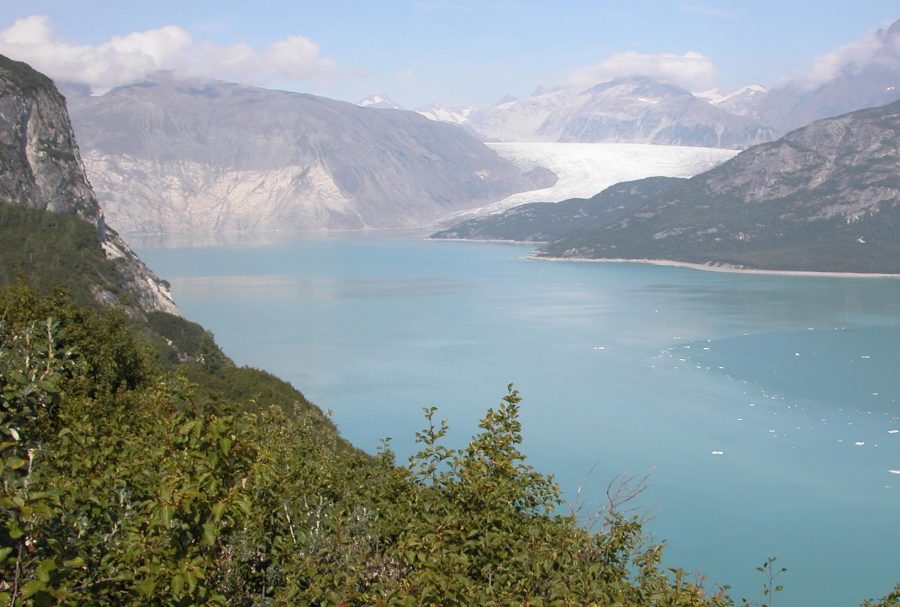2016 Sets Record as Hottest Year
The World Meteorological Organization revealed that 2016 is the new hottest year on record, and independent analyses by the National Aeronautics and Space Administration (NASA) and the National Oceanic and Atmospheric Administration (NOAA) indicate that this was the third consecutive global heat record-breaking year. In short, the planet is experiencing global warming: the gradual increase of the average temperature of the Earth’s atmosphere and its ocean.
“We need to either figure out how to either slow [global warming], or adapt better to it,” science teacher Mr. Rick Dreves said.
Since recordkeeping began in the 19th century, the Earth’s temperature has risen by about two degrees Fahrenheit, and scientists predict that warming will continue to exceed records. For the nay sayers, 97 percent of climate papers stating a position on climate change agree that global warming is indeed happening, and that it is largely caused by human activities such as using large volumes of carbon dioxide and greenhouse gases, burning fossil fuels, agriculture, land clearing, and more.
Human-caused climate change is responsible for the record-warm years seen in the twenty-first century. In a recent New York Times article, climate scientist Michael E. Mann of the Earth Science Center at Pennsylvania State University said without these human factors, the level of global warming which we have achieved would have less than one-in-a-million odds of happening.
While a two-degree increase may not seem significant, a few consequences of those two degrees are the increase of allergies, asthma, and infectious disease outbreaks, all due to the spread of conditions beneficial for pathogens and mosquitos, the swelling of pollen-producing ragweed population, and higher levels of air pollution. Global warming is also producing ocean acidification, which happens when humans release carbon into the atmosphere, thus raising the temperature. When the emission meets water, it creates carbonic acid, which lowers the PH of the water, thus raising the acidity. Some shellfish are already feeling the negative effects of ocean acidification, as their shells are dissolving faster than they can be produced.
“You’ve got tick outbreaks because of warmer temperatures, and [the ticks are] killing off moose because they’re [having their blood] sucked dry,” senior Garrison Piel said. “All these little side effects that we are not expecting are coming out of nowhere as the trend continues. I’m worried about what the next surprise is.”
According to multiple sources like the NOAA, Princeton University, and the University of Oxford, chances of the recurrence and ferocity of heavy rains has increased due to human-induced climate change. Rising temperatures are creating more powerful hurricanes, longer and hotter heat waves, frequent droughts, and heavier rainfall. For example, the 2016 Louisiana floods were 10 percent stronger and 40 percent more likely due to climate change. In fact, the U.S. experienced 15 weather and climate disasters, which caused 138 deaths and $46 billion in damages to the U.S.
“I am really just scared for when I’m here and when I’m gone. What’s going to happen?” Piel said. “I’m big into wildlife, and I see all the biodiversity around us already starting to die off and shrivel, and these statistics that are predicting that [human beings are causing] a sixth major extinction…because we are killing off so much of our wildlife.”
Last year was also the United States’ second warmest year in 122 years of record-keeping, and the 20th consecutive year that the annual average temperature exceeded the normal average temperature. However, weather dynamics often affect regional temperatures. For instance, the El Niño, a wide scale, irregularly occurring and complex atmosphere-ocean climate interaction linked to the unusually warm sea surface temperatures across the Equatorial Pacific regions every few years, is partly to blame for the speedier heating months of 2015 and early months of 2016. Therefore, not every region on Earth experienced record average temperatures last year.
“I think they need to relax a bit, because if they make it too big of an issue, issues that are more important won’t get solved,” junior Zackary Campbell said.
Nevertheless, many people believe that the temperature record is unreliable, glaciers are growing, or that the earth is actually cooling instead of warming. Unfortunately, these people are victims of misinformation influenced by commonly spread myths regarding global warming. Many reputable online resources are available for education on the topic. SkepticalScience.com, for instance, debunks myths, and even contains both basic and intermediate-level explanations, while also citing a plethora of sources.
“Like anything, [climate change] has to be taken, interpreted, and chewed upon for a logical conclusion,” Mr. Dreves said. “If you care, you care, if you don’t, you don’t, but you should have some concern because it does affect you.”
If you are concerned about climate change and want to see what you can do, there are countless solutions that the average person can easily implement. You could install a programmable thermostat (which would save you about $100 a year on your energy bill), clean or replace filters on your furnace and air conditioner, cover your pots while cooking, use the washing machine or dishwasher only when they are full, take showers instead of baths, and much more. Such little, earth-friendly changes, over time, could begin to diminish the threat of human-induced global warming.

Rachael Borelli began her senior year as a first-year staff reporter, but finished it as one of the co-editors of the opinion section. Just as quickly...


